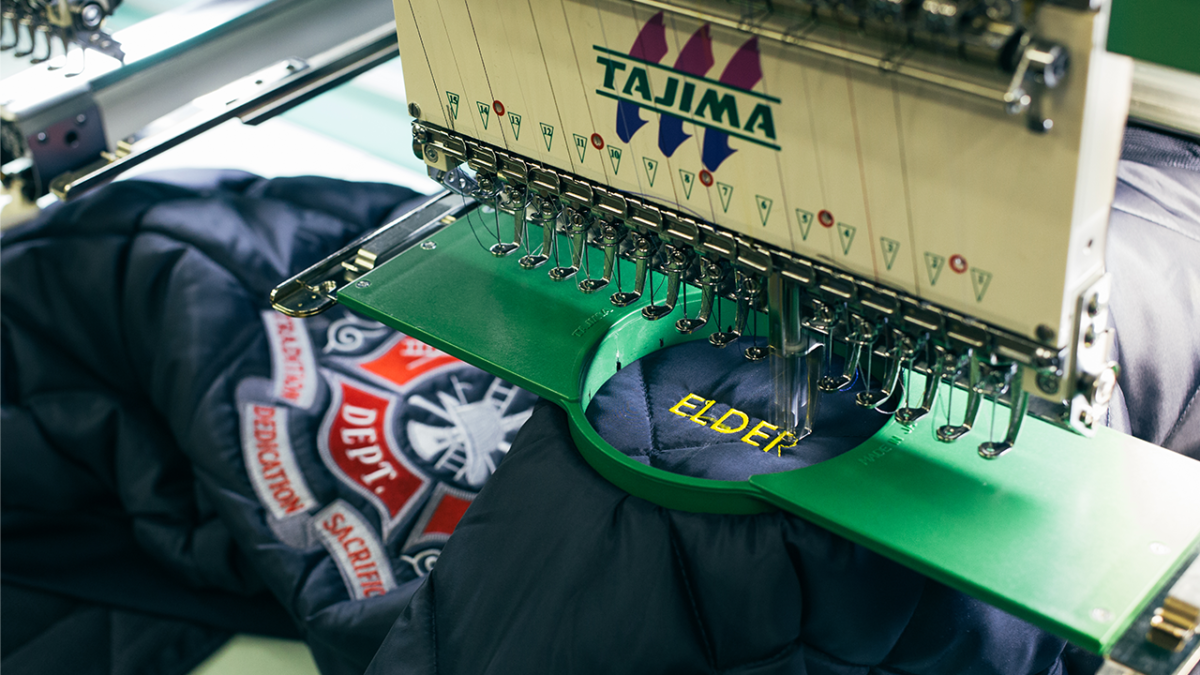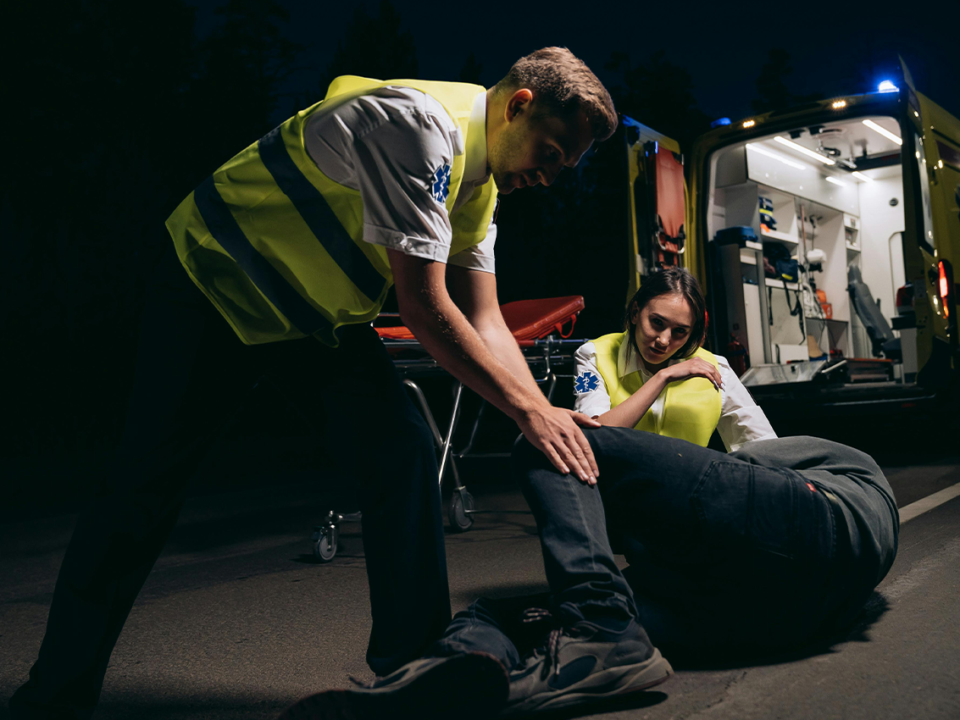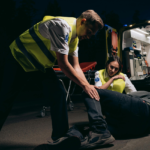
Emergency Services Uniform Company: Quality Apparel & Custom Options
Station wear uniforms play a vital role in fostering unity and professionalism among employees. These specialized uniforms not only enhance the visual appeal but also promote brand recognition and a sense of belonging within the team. The design, color, and functionality of station wear uniforms are carefully crafted to reflect the values and identity of the organization. By incorporating durable fabrics and practical features, these uniforms ensure both comfort and durability for employees in various work environments. Embracing station wear uniforms is more than just a dress code; it signifies a commitment to excellence and cohesion within the workplace.
Key Takeaways
- **Investing in quality station wear uniforms is crucial for the safety and comfort of firefighters during their shifts.
- **Understanding the NFPA 1975 standard helps in selecting station wear that meets safety requirements and regulations.
- **Look for features like moisture-wicking fabrics and reinforced stitching when choosing station wear uniforms for durability and functionality.
- **Quality station wear offers benefits such as protection from heat, moisture management, and professional appearance.
- **When selecting station wear, consider factors like fit, material, and compliance with safety standards to ensure the right choice for your needs.
- **Custom firefighter shirts and accessories can enhance team unity and professional image while maintaining functionality and safety standards.
Importance of Station Wear
Safety First
Station wear uniforms are crucial for ensuring the safety of firefighters during their demanding duties. These uniforms come equipped with special features that reduce the risk of injuries while on duty. For example, flame-resistant materials and reflective strips enhance visibility in low-light conditions.
In high-risk situations like firefighting, safety is paramount, and station wear uniforms play a significant role in safeguarding firefighters. By wearing these specialized garments, firefighters can focus on their tasks without worrying about compromising their well-being.
Professional Appearance
Apart from safety considerations, station wear uniforms also contribute to projecting a professional image for firefighters. These uniforms exude authority and professionalism, reflecting the esteemed standards associated with firefighting as a profession. A well-groomed appearance instills confidence in both firefighters and the public they serve.
The polished look of station wear uniforms not only boosts morale among team members but also fosters respect from the community towards the firefighting service. The crisp and tidy attire symbolizes readiness and dedication to serving others diligently.
Comfort and Mobility
While safety and professionalism are crucial aspects, comfort and mobility are equally essential. Firefighters need clothing that allows them to move freely without any hindrances during emergencies or rescue operations.
Designed with flexibility in mind, station wear uniforms enable firefighters to carry out physically demanding tasks comfortably. The fabrics used are lightweight yet durable, ensuring that responders can perform efficiently while being at ease.
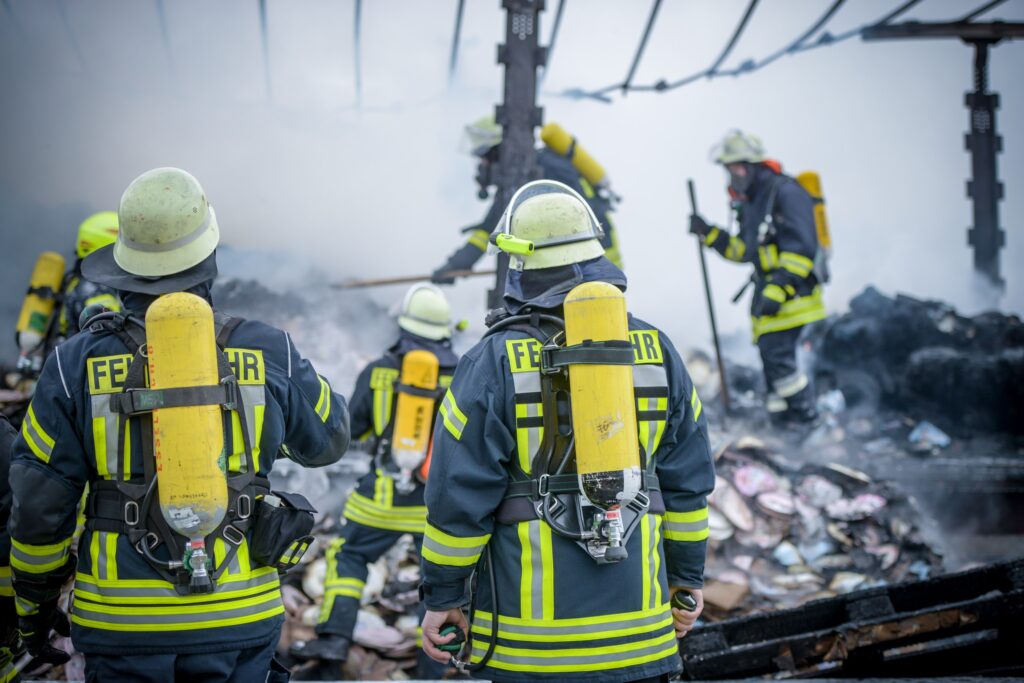
Firefighter Station Wear Overview
Uniform Essentials
Firefighter station wear uniforms consist of essential components like shirts, pants, jackets, and footwear. Each piece plays a crucial role in ensuring firefighters are properly geared up for their daily duties. For instance, the shirts and pants provide comfort and mobility during rescue operations, while the jackets offer protection against heat and flames. Specialized footwear helps prevent injuries from sharp objects or slippery surfaces.
These essentials are meticulously designed to meet the demanding requirements of firefighting tasks. By incorporating various features such as moisture-wicking properties in shirts to keep firefighters dry or reinforced knees on pants for durability during kneeling actions, station wear uniforms prioritize functionality and safety above all else.
Materials Used
Two commonly used flame-resistant fabrics in firefighter station wear uniforms are Tecasafe and Nomex. Tecasafe fabric is renowned for its exceptional resistance to heat and flames while maintaining durability over time. This fabric ensures that firefighters stay protected without compromising on comfort or flexibility during intense situations. On the other hand, Nomex offers outstanding thermal protection combined with high fire resistance levels—making it a top choice among firefighting professionals worldwide due to its proven reliability under extreme conditions.
The selection of these advanced materials underscores the importance of prioritizing firefighter safety by providing garments that not only meet but exceed industry standards for protective clothing.
NFPA 1975 Standard Explained
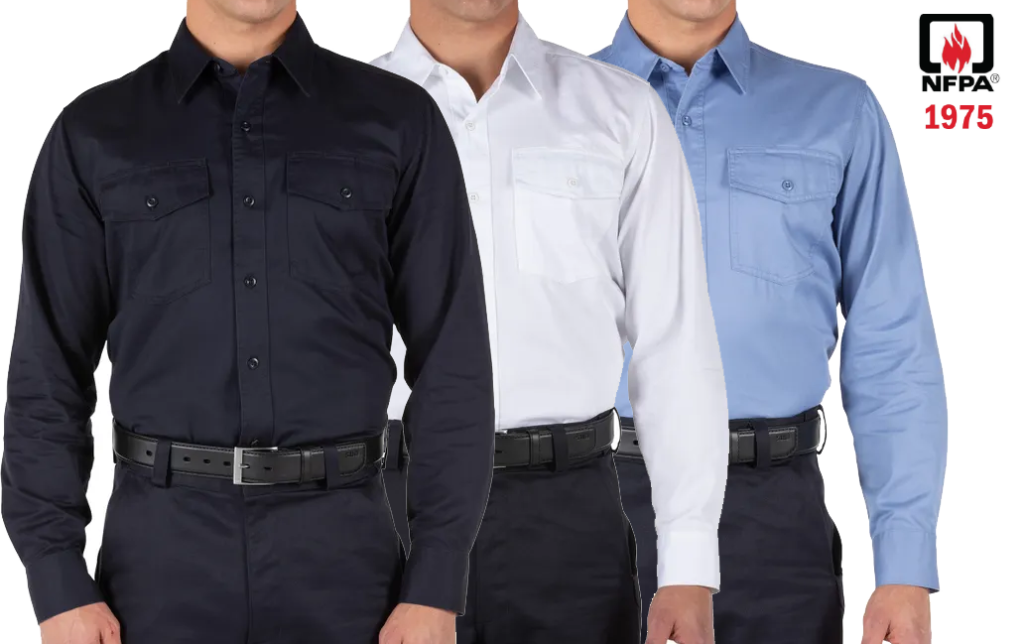
Purpose
Station wear uniforms play a vital role in the firefighting profession, serving purposes like safety, professionalism, and functionality. These specialized uniforms are meticulously crafted to meet the unique needs and challenges faced by firefighters daily. The primary aim of station wear uniforms is to ensure that firefighters have the optimal protection and comfort required to perform their duties effectively.
In the realm of firefighting, station wear uniforms cover a broad spectrum of functions within a firefighter’s work environment. These uniforms are not only suitable for on-duty tasks but also cater to off-duty situations, ensuring that firefighters are always prepared and equipped appropriately. Whether it’s providing safety during emergency responses or presenting a professional image in public interactions, station wear uniforms fulfill various needs essential for firefighters’ roles.
Scope
Firefighters can choose from an array of station wear uniform types, such as shirts, pants, jumpsuits, and coveralls. Each type serves a specific purpose tailored to address different requirements encountered in firefighting scenarios. For instance, shirts may offer flexibility for ease of movement during rescue operations, while coveralls provide full-body coverage for hazardous environments.
The versatility of station wear uniforms allows firefighters to select the most suitable attire based on their job demands. From combating intense flames at fire scenes to engaging with communities during educational events or public appearances, these diverse uniform types ensure that firefighters are adequately outfitted for any situation they may encounter.
Features of Station Wear Uniforms
Durability
Station wear uniforms are specifically crafted to endure the tough conditions that firefighters encounter daily. These uniforms are constructed using robust materials that can withstand extensive use without deteriorating. The longevity of station wear uniforms is heavily reliant on their durability, ensuring they remain intact even after prolonged wear and tear.
The durability of station wear uniforms plays a pivotal role in maintaining the safety and functionality of firefighters’ attire. For instance, reinforced stitching and high-quality fabrics enhance the resilience of these uniforms against abrasions, tears, and other damages incurred during firefighting operations. This feature guarantees that station wear uniforms can stand up to the rigorous demands placed on them in emergency situations.
- Pros:
- Long-lasting lifespan
- Resilient against damage
- Cons:
- May be slightly heavier due to durable materials
Heat Resistance
One of the most critical features of station wear uniforms is their exceptional heat resistance capabilities. These specialized garments offer superior protection against extreme temperatures by utilizing fabrics with high flame-retardant properties. By incorporating heat-resistant materials into their design, station wear uniforms shield firefighters from burns and injuries caused by exposure to intense heat sources.
Firefighters rely on the heat resistance provided by their station wear uniforms to safeguard themselves while battling fires or working in hazardous environments where temperatures escalate rapidly. The ability of these garments to repel flames and minimize heat transfer ensures that firefighters can focus on their duties without compromising their safety amidst dangerous conditions.
- Key Information:
Benefits of Quality Station Wear

Enhanced Protection
Station wear uniforms provide enhanced protection for firefighters against various hazards. These uniforms are equipped with safety features like reflective strips and reinforced stitching to minimize risks. By wearing station wear uniforms, firefighters can feel more secure in challenging situations where their safety is paramount.
- Reflective strips increase visibility
- Reinforced stitching enhances durability
- Minimizes risks during emergencies
Longevity is a key characteristic of station wear uniforms, offering durability and resilience. The materials used in these uniforms are carefully chosen to withstand the demands of firefighting environments. Firefighters can rely on their station wear uniforms to last through rigorous tasks over time.
- Built to withstand tough conditions
- Provides long-term value for firefighters
- Ensures longevity and reliability
Improved Performance
Wearing quality station wear uniforms contributes to improved performance among firefighters. These well-designed uniforms prioritize comfort and functionality, enabling firefighters to carry out their duties efficiently and effectively. With enhanced performance, firefighters can focus on their tasks without being hindered by discomfort or inadequate gear.
- Prioritizes comfort for extended use
- Enables efficient task execution
Choosing the Right Station Wear
Material Considerations
Station wear uniforms’ material selection is crucial for performance and safety. Factors like flame resistance, breathability, and durability are key considerations. The choice of materials significantly impacts the overall quality of station wear uniforms.
Materials play a vital role in ensuring that station wear uniforms offer adequate protection to firefighters. For instance, flame-resistant fabrics help protect against fire hazards during emergency responses. Breathable materials enhance comfort by allowing airflow while performing physically demanding tasks.
Compliance with Standards
Compliance with industry safety standards is essential for effective station wear uniforms. Adhering to these standards ensures that the garments provide optimal protection to firefighters in various scenarios. Meeting specific safety regulations guarantees the reliability and functionality of station wear uniforms.
Ensuring compliance with established standards also reflects on the commitment to prioritizing firefighter safety and well-being within fire departments or emergency response organizations.
Custom Options
Station wear garments often come with customization options tailored to individual preferences. Firefighters can personalize their uniforms by adding patches or embroidery according to their liking. These custom options empower firefighters to infuse a personal touch into their station wear attire.
Customization allows firefighters not only to express individuality but also fosters a sense of identity and unity within firefighting teams through unique uniform designs.
Custom Firefighter Shirts
Design Flexibility
Station wear uniforms offer design flexibility by providing a range of options to meet different needs. These firefighter shirts can be customized to fit various body types and sizes, ensuring a comfortable and practical fit for all firefighters. For example, some shirts may have adjustable features like Velcro straps or elastic bands to accommodate different body shapes.
Moreover, the design flexibility of station wear uniforms allows firefighters to choose from a variety of styles, colors, and materials based on their preferences. This ensures that each firefighter can select a shirt that not only fits well but also reflects their personal style while adhering to safety standards. By offering customization options, these shirts cater to the diverse requirements of firefighting professionals.
Personalization Options
Custom firefighter shirts often come with personalization options, such as name tags or ID badges. These personalized elements serve as identifiers within a team or department, making it easier for colleagues and supervisors to recognize individual firefighters quickly in emergency situations. For instance, having names embroidered on the shirts enhances teamwork by fostering familiarity among team members.
Furthermore, incorporating personalization into station wear uniforms creates a sense of identity and belonging among firefighters. When individuals see their names or specific details on their shirts, it instills pride in their profession and strengthens camaraderie within the firefighting community. Personalized firefighter shirts not only enhance visibility but also promote unity and cohesion among team members.
Accessories for Emergency Professionals
Essential Add-ons
Station wear uniforms come with essential add-ons such as belts, suspenders, and utility pockets. These additional features are crucial for firefighters as they enhance functionality and convenience during emergency situations. For instance, utility pockets provide storage space for essential tools or equipment that firefighters may need quick access to while on duty.
These add-ons are designed to complement the main components of station wear uniforms. Belts help secure the uniform in place, ensuring a proper fit for ease of movement during rescue operations. Suspenders can distribute the weight of gear evenly across the body, reducing strain and discomfort when wearing heavy firefighting equipment.
- Pros:
- Enhanced functionality and convenience
- Secure fit and ease of movement
- Cons:
- Additional weight from accessories
- Potential risk of entanglement in hazardous environments
Compatibility with Uniforms
Station wear uniforms are specifically crafted to be compatible with other firefighting gear and equipment used by emergency professionals. This compatibility ensures that these uniforms seamlessly integrate with personal protective equipment (PPE) worn by firefighters without compromising safety or mobility. By being compatible with various gear pieces like helmets or breathing apparatuses, station wear uniforms allow firefighters to perform their duties effectively.
This seamless integration guarantees that station wear uniforms work harmoniously with other attire required for emergency services. Firefighters can easily layer their PPE over their station wear uniform without any restrictions in movement or compromised protection levels.
- Key Information:
Maintenance and Care
Cleaning Tips
Station wear uniforms necessitate proper cleaning techniques to uphold their quality and functionality. Adhering to the manufacturer’s guidelines for washing and drying is crucial for ensuring optimal cleanliness. By following these cleaning tips, firefighters can preserve their station wear uniforms in top condition. Regularly washing these garments not only removes dirt and grime but also helps maintain their appearance.
Proper maintenance extends the lifespan of station wear uniforms, making them more cost-effective in the long run. For instance, washing turnout gear after exposure to hazardous materials prevents contamination risks during future use. Using mild detergents that are suitable for firefighting fabrics helps protect the integrity of the material over time.
Storage Solutions
To prevent damage and preserve the integrity of station wear uniforms, appropriate storage solutions are essential. Garment bags or lockers can effectively shield these garments from dust, moisture, and sunlight when not in use. Storing station wear uniforms properly contributes significantly to prolonging their lifespan by reducing wear and tear caused by improper handling or environmental factors.
Final Remarks
In conclusion, understanding the significance of proper station wear for firefighters is crucial. The adherence to NFPA 1975 standards, the selection of high-quality materials, and the maintenance of these uniforms are essential aspects that directly impact the safety and performance of emergency professionals. By choosing the right station wear and accessories, such as custom firefighter shirts, individuals can enhance their overall comfort and protection while on duty. It is imperative to prioritize the well-being of firefighters by investing in appropriate station wear and ensuring its upkeep to uphold their safety standards.
For those in the emergency services sector, it is recommended to regularly review and update station wear to align with industry standards and best practices. By staying informed about advancements in materials and designs, professionals can continue to optimize their performance and safety levels effectively.
Frequently Asked Questions
What is the significance of wearing station wear uniforms?
Station wear uniforms are crucial for firefighters as they provide identification, protection, and a sense of unity. They help maintain a professional image and ensure safety during emergency responses.
How does NFPA 1975 standard relate to station wear uniforms?
NFPA 1975 sets guidelines for firefighter station wear regarding design, performance, and materials. Adhering to this standard ensures that the uniforms meet necessary safety requirements for firefighting activities.
What are the key features of station wear uniforms?
Station wear uniforms typically include moisture-wicking fabrics, reinforced stitching for durability, reflective elements for visibility in low-light conditions, and multiple pockets for storing essentials during emergencies.
Why is choosing quality station wear important?
Quality station wear ensures comfort, durability, and functionality during prolonged use. High-quality materials offer better protection against heat and flames while maintaining breathability and flexibility for ease of movement.
How can one select the right station wear uniform?
Selecting the right station wear involves considering factors like fit, material quality, compliance with safety standards such as NFPA 1975, specific job requirements or hazards faced by firefighters on duty. Consulting with suppliers or experienced professionals can aid in making an informed decision.

